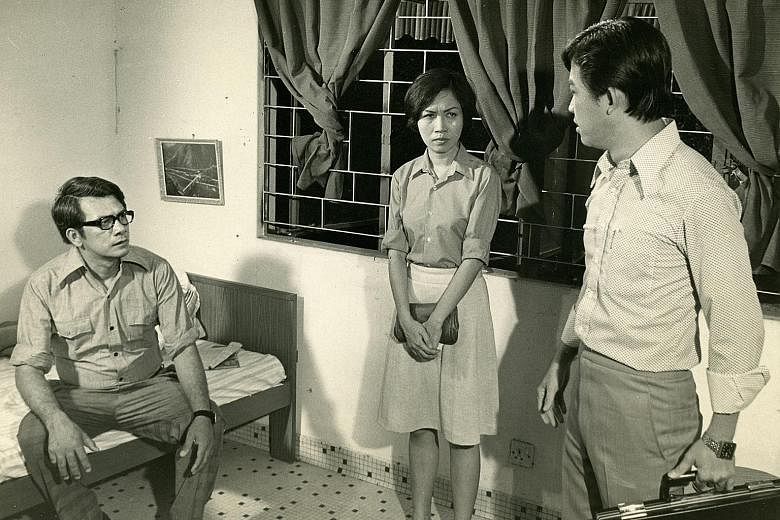Many of Singapore's most popular local films today are in Mandarin, but during the 1970s, that was almost unheard of.
Then, Malay-language works made up the bulk of the local film output and audiences here who wanted to watch Chinese-language content went to screenings of imported films from places such as Hong Kong and Taiwan.
Film-makers Lim Meng Chew and Tan Chang Meng's 1976 film, Two Sides Of The Bridge, is believed to be one of the first local Mandarin films produced for the audience here.
The work is about a young Malaysian man (played by Chan Pong Koon) who travels from rural Kelantan to urbanising Singapore for a better life. However, he gets involved with drug traffickers. The film will be screened today at the National Museum of Singapore.
-
VIEW IT / TWO SIDES OF THE BRIDGE
-
WHERE: Gallery Theatre, National Museum of Singapore, 93 Stamford Road
WHEN:Today, 2pm
ADMISSION: Free. Tickets are available on a first-come, first-served basis online (cinemathequeselects-twosidesofthebridge.peatix.com) and at the door.
The screening is part of Cinematheque Selects, the museum's monthly series featuring film- makers and productions from Singapore's past and present.
Tan, now 78 and retired, tells The Straits Times in Mandarin: "Many people at the time enjoyed Chinese-language films from Taiwan and Hong Kong, but there were no local Mandarin films with that distinct local flavour.
"Our film was a local story, filmed locally, and made with a Singaporean cast and crew. It was something quite special."
It is one of three films produced by the now-defunct Chong Gay Organisation, which had operated movie theatres at Kallang and Golden Mile, among other locations in Singapore.
Tan says: "Big film studios Cathay-Keris and Shaw were winding down their film production units due to financial difficulties and were acquiring a lot of content from overseas.
"The Chong Gay boss decided to compete with the imported movies by investing in small local films. There were plans to make more, but when he died, those plans were scrapped."
Two Sides Of The Bridge was well received by the "artsy" crowd but not the mainstream audience, Tan says. It was shot on location in places such as Shenton Way, the former horseracing race course at Bukit Timah and the river near Old Airport Road.
Tan says: "The river is still there, but the place looks different now."
He will be among more than 10 members of the cast and crew participating in a dialogue session after the screening.
"It'll be one big reunion. Most of us are old folks now. Even the person who played the baby in the film is already in her 40s," he says.
He and Lim, who died in 2005 from pneumonia, came up with the story from observing the socio- political realities of that time.
"People who were Chinese-educated during the 1960s and 1970s had major struggles when they graduated. They didn't have many options compared to those who spoke English," he says. "When they tried to look for work, some would be easily seduced by vices such as gambling. We wanted to make a film that reflected the society at the time."
Tan, who made two more commercial documentaries before working full-time as a journalist with Chinese newspapers Sinchew Daily and Lianhe Wanbao, says: "Our film did not feature any big movie stars, but we were proud of the film when we made it. It marks a milestone in local film production history."


